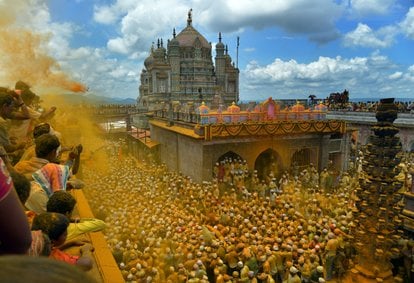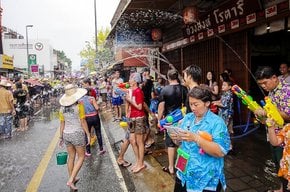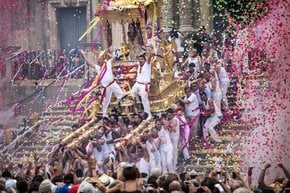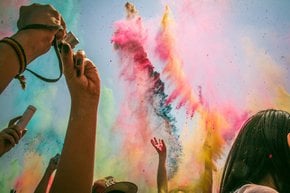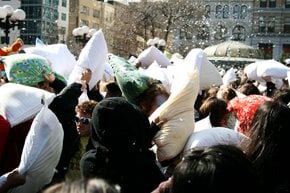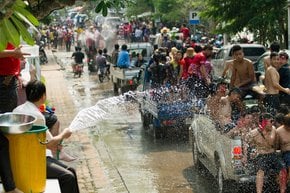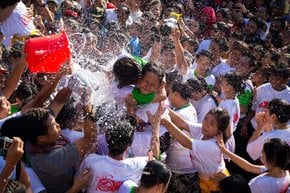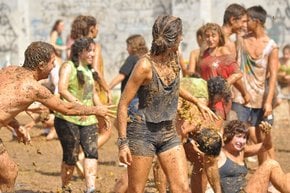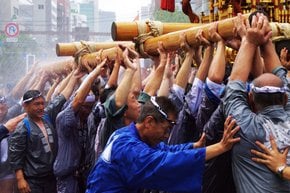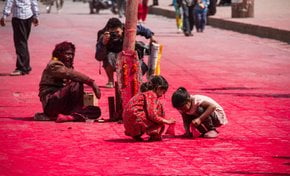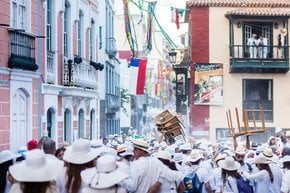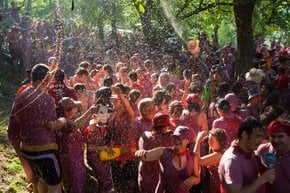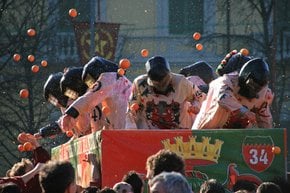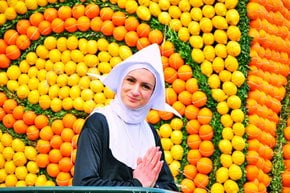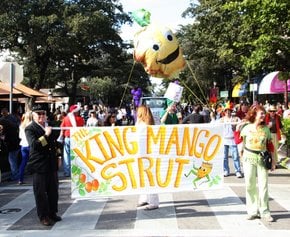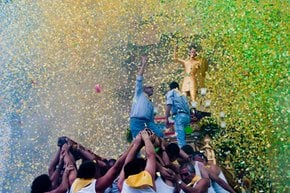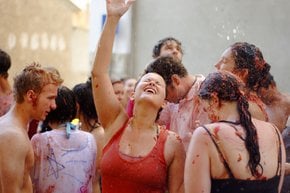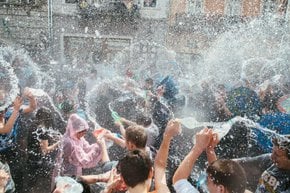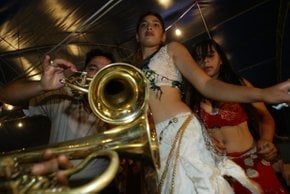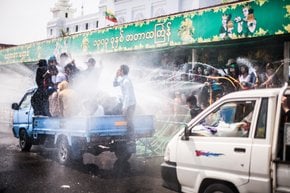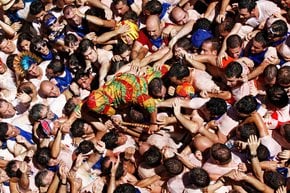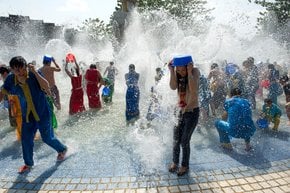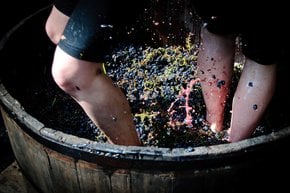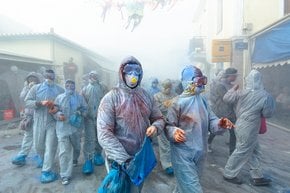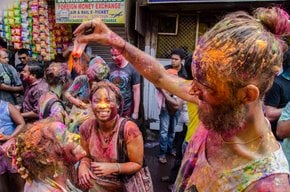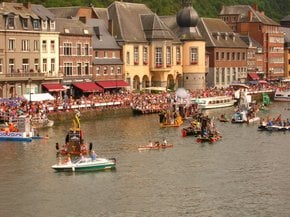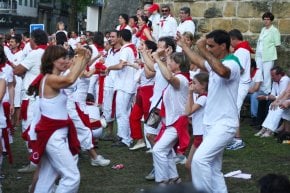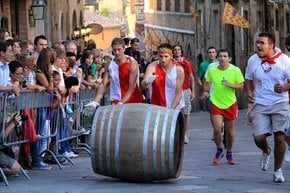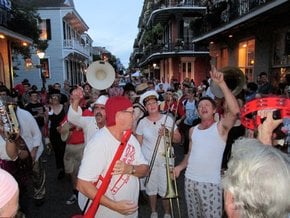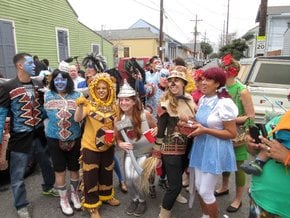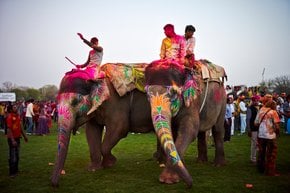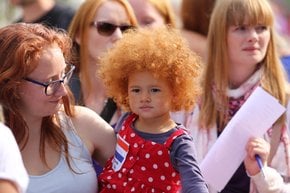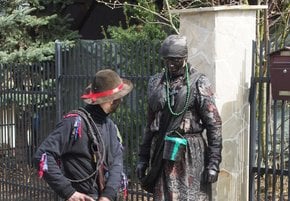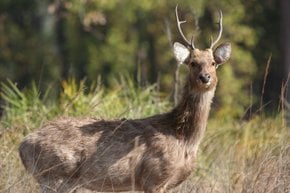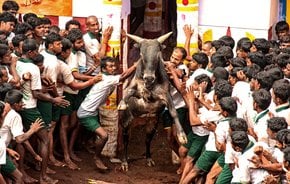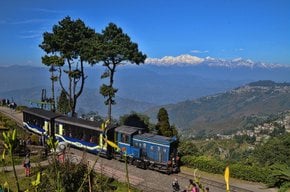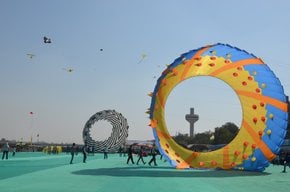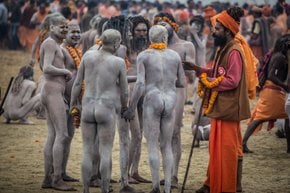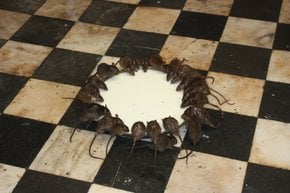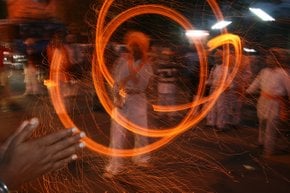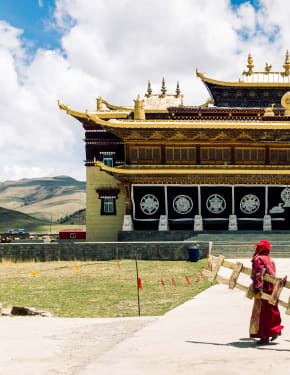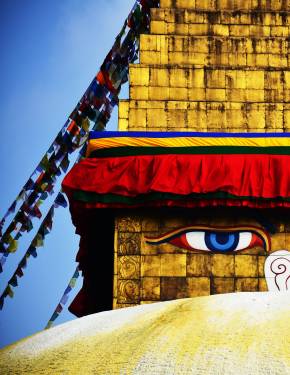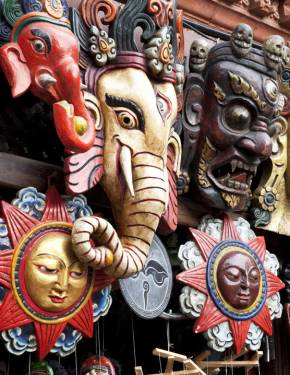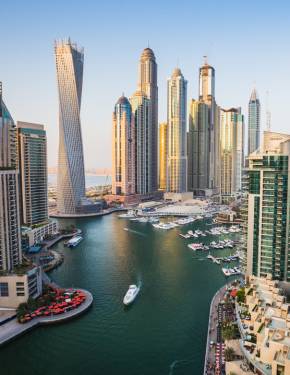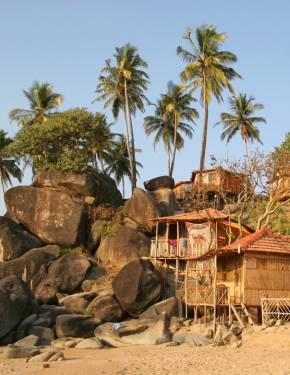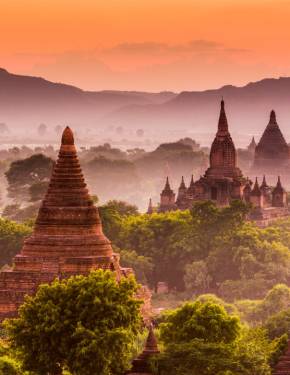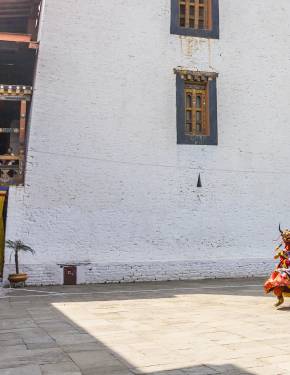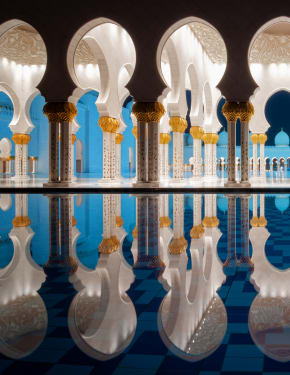Somvati Utsav (Bhandara Festival) in Jejuri 2024, India
Have you ever seen gold in the air?
Dates: April 8, 2024 | September 2, 2024 | December 30, 2024
Somvati Utsav, also known as the Bhandara Festival, is a unique festival of golden turmeric powder (Bhandare) dedicated to a local deity, Khandoba, who is often considered a family deity. A newly married couple must come to the Khandoba temple in Jejuri to celebrate their wedding. Among believers, Khandoba is also known as the god of fertility, which is why some couples visit the temple to make a wish for a baby.
Festival Highlights
Jejuri, also known as "Sonyachi Jejuri" (Golden Jejuri), earns its name from the golden hue of turmeric that fills the air during the festival. The Somvati Utsav is not only unique for its turmeric veil, but also for its unpredictable timing. The festival is not bound by a fixed date, season, or month. It is solely determined by the occurrence of a new moon day falling on a Monday, which can happen multiple times a year and at any time of the year. The best way to keep track of the festival is to monitor the dates of the Somvati Amavasya (no moon's day that falls on Monday).
The God of Jejuri
Khandoba, regarded as the "God of Jejuri", is probably the most versatile and widely acknowledged deity, worshipped across many casts, religions, and communities. The god is also considered a non-vegetarian, so many devotees offer him goat flesh.
Rituals at the Festival
The festival begins with a yatra (procession) of the deity's idol, culminating in its immersion in the nearby Karha River. To reach the temple, participants pass through seven arches and descend a series of steps. During the festival, devotees engage in a variety of religious rituals, some of which involve self-torture. These acts are performed under a trance-like state, demonstrating the devotees' insensitivity to pain during this time. This unique practice is a testament to the deep faith and devotion of the festival participants.
Festival Significance
The Bhandara festival holds varied significance for devotees of different sects, yet they are united by the use of turmeric in their celebrations. Many believe turmeric symbolizes gold and prosperity, which they seek from their lord. Traditional depictions of Khandoba often portray him as a descendant of the Sun God, with ancient paintings showing him holding a bowl of turmeric on a white horse. His idols typically represent him as a four-armed deity with a bhandara-patra (bowl of turmeric) in one hand. While depictions of Khandoba may vary, all devotees believe in his power to reunite, rejuvenate, and rekindle life. This shared belief transforms a gathering of thousands into a harmonious and peaceful celebration.

